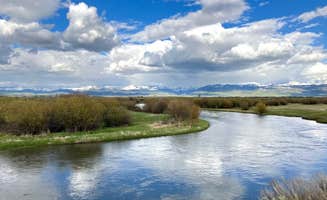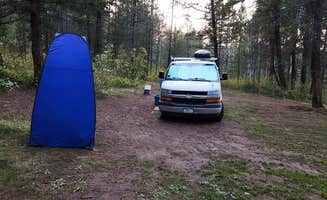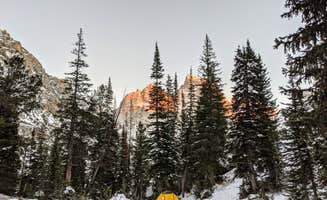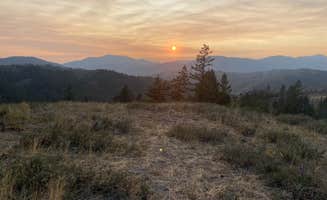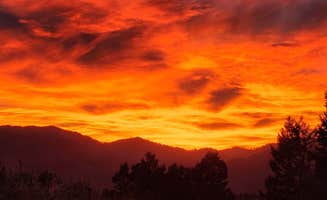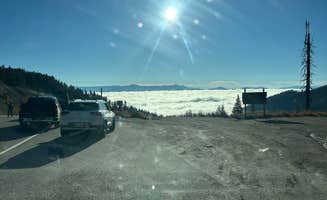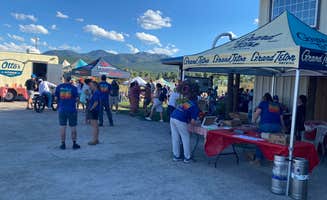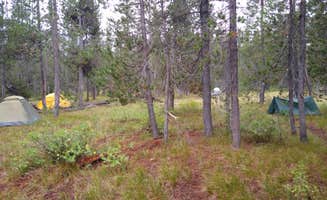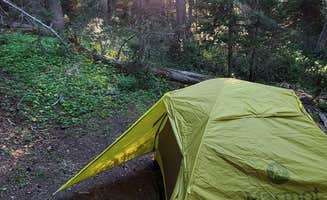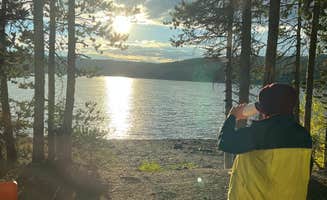Dispersed camping options around Felt, Idaho often extend into the backcountry, with elevations ranging from 6,000 to 9,000 feet throughout the surrounding national forests. The camping season typically runs from late May through September, though higher elevation sites may have snow into July. Most rustic camping near Felt requires campers to pack out all trash and bring their own water supplies.
What to do
Fishing access: Multiple dispersed sites near Felt provide river access. At Big Eddy Dispersed Camping, campers appreciate the riverside location. "Right next to a river as well and the night sky was amazing!" notes Ashley A. The lazy river flow makes it suitable for casual anglers.
Hiking trails: The area offers numerous hiking options directly from campsites. At Moose Creek Trailhead Dispersed Area, campers find "Lots of hiking right from site," according to Kimberley D. Many trails connect to larger networks within Caribou-Targhee National Forest.
Wildlife observation: The region supports diverse wildlife viewing opportunities. One camper at Ashton-Flagg Ranch Road noted seeing "a family of deer munching in the field on our morning walk out." Early mornings and evenings provide the best wildlife viewing times.
What campers like
Isolation: Pine Creek Road dispersed camping offers significant privacy compared to more popular areas. According to one camper, "Passed one other car but didnt hear or see anyone all night." Another noted they "only saw one other vehicle on the road and many open campsites."
Sunrise views: Many campers at Upper Teton View Dispersed specifically mention the morning vistas. One camper states, "It was an amazing view to wake up to! It's literally right outside the National Park!!" Sites on elevated terrain provide the most dramatic sunrise experiences.
Natural swimming: Some sites offer cold-water swimming options. At Moose Creek, one visitor described "Cold, clear water makes for a refreshing (very cold!) natural bath." These natural features provide relief during hot summer months when temperatures can reach the 90s.
What you should know
Reservation alternatives: No reservations exist for dispersed sites, requiring backup plans during peak season. At Shadow Mountain Dispersed Camping, one camper advised, "We arrived around 2PM on our first day and all sites were full, we came back around 8 the next morning and found one site available for us to take."
Road challenges: Many access roads require appropriate vehicles. "The dirt road in is rough, steep and narrow. We were in my Honda CR-V and it did fine, but if you're not careful, you could easily do some damage," one Shadow Mountain camper reported. Sites closer to main roads typically have better access.
Insect preparation: Mosquitoes present significant challenges across the region. One camper at Pine Creek Pass noted conditions can be "buggy at the height of the summer (July 2024 had been atrocious)." Riverside sites typically experience more severe insect pressure than higher elevation locations.
Tips for camping with families
Bear safety: The area requires proper food storage protocols. At Pine Creek Rd Dispersed, families should note that all sites fall within bear country. Bring hard-sided containers or use provided bear boxes where available.
Site selection: Families benefit from selecting established sites with amenities. At Big Eddy, "There are a few fire rings scattered about - the stone kind. There are also two vault toilets. The local art league has had some kids paint the inside to look really cool," noted Kent H.
Early arrival: With children, securing appropriate sites becomes critical. One Shadow Mountain camper advised, "We came in at sunset and we drove around for over a hour trying to find a campsite. Everywhere was full but a lady let us stay on her site since it was really big."
Tips from RVers
Clearance considerations: RV access varies significantly by location. For Upper Teton View, one RVer reported, "Road up is a little rough but made it fine towing our 38ft 5th wheel." Sites lower on mountain roads typically provide better RV access.
Shared spaces: Some areas feature communal camping with undefined boundaries. At Ashton-Flagg Ranch Road, "There are multiple campsites that are shared with 2-3 other campers. Some of the sites have bathrooms," notes Dana V. This arrangement works better for smaller RVs than large rigs requiring significant space.
Utility planning: No hookups exist at any rustic camping sites near Felt, Idaho. RVers must arrive with full water tanks and empty waste tanks. Some report cell service at higher elevations, with one Pine Creek Pass camper noting "Three bars of cellular on ATT."


